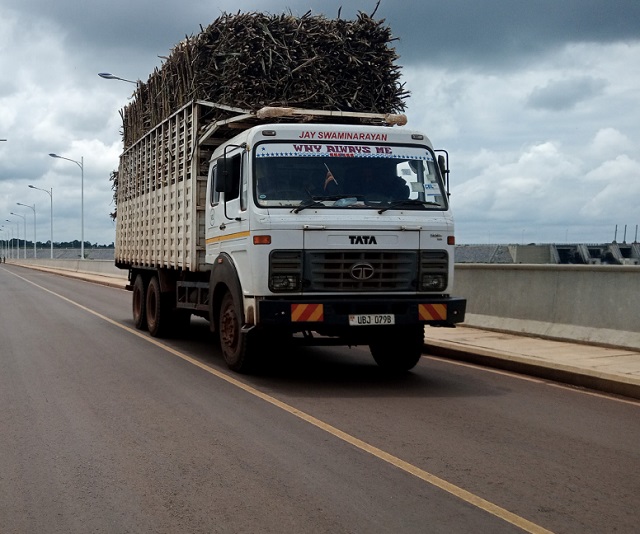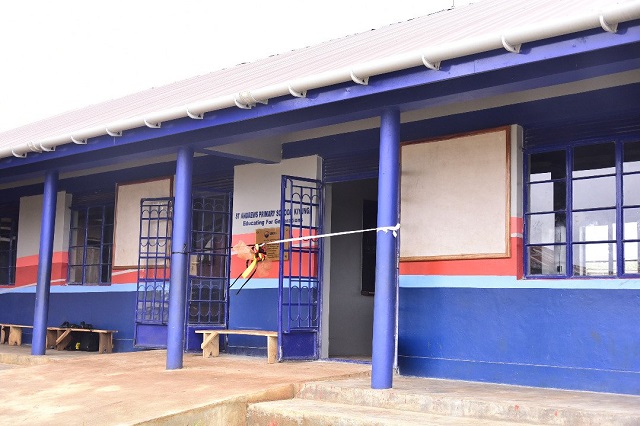
Dams trigger developments
Commenting on the new developments, Irene Batebe, the Permanent Secretary in the Ministry of Energy and Mineral Development told The Independent that the government is now focusing on utilizing the borrowed funds especially from China to develop the country holistically.
“The infrastructure we are setting up here will precipitate development,” she told The Independent in an interview during a recent site visit at Karuma Hydropower Dam. “If it is a road in the community, it is going to precipitate development like the local population’s accessing markets.”
“So, there’s that ripple effect coming from these projects. We should look at these developments in a holistic manner. If it is a hospital, we are improving the health care of the people in these areas.”
Batebe said the critics of Uganda’s acquisition of the China’s Exim bank should look at the social economic benefits over and above the country’s interest rates and debt repayment.
Paul Lakuma, a research fellow at the Economic Policy Research Centre based at Makerere University reiterated that, in fact, debts aren’t bad for any country but it depends on how it is utilized.
He said there’s only need for the government to balance its investment in infrastructure and improving people’s livelihoods. This, he said, is because return on investment in infrastructure project is very low in the initial years.
“We must have a mix of projects; some with short term returns and others with long term returns,” he said.
“We tend to enjoy a basket of goods. We enjoy when our health is good, when our children can go to school and there are textbooks and desks and we also like seeing good roads.”
Lakuma said good health and education will enable the population to prosper and therefore be in position to repay the borrowed funds.
“However, this does not mean that we should stop investing in infrastructure. We need to continue because other countries around us are investing in infrastructure and we risk being behind although we now need to empower people economically as well,” he said.
A research carried out by a political economists, Tom Ogwang and Frank Vanclay, dubbed ‘Resource-Financed Infrastructure: Thoughts on Four Chinese-Financed Projects in Uganda’ published this year states that ‘there is little truth and much myth-making and fear mongering’ in the allegations of Uganda’s China debt sustainability.
The research quoting the Ministry of Finance’s ‘Report on Public Debt, Guarantees, Other Financial Liabilities and Grants for Financial Year 2018/19,’ states that China isn’t the country’s biggest lender; instead, the International Development Association (IDA) which includes the World Bank accounts for the lion’s share, 40% of the country’s debt followed with China 22% and the African Development Bank 17%.
With the anecdotes of Isimba and Karuma hydropower dams, Entebbe-Kampala Expressway and the planned Standard Gauge Railway, the research notes that many commentators have raised concerns about China’s expanding economic presence in Uganda and Africa.
“They have warned about a lack of transparency, the hiring of Chinese instead of local workers, the creation of unsustainable debt, the promotion of China’s commercial interests ahead of the borrowing country’s needs, and a lack of good governance,” the researcher notes.
More myth than trap
“Nevertheless, we conclude that Uganda and other developing countries have generally benefited from Chinese funded infrastructure, and there is more myth trap than debt trap.”
The research, however, says that to ensure positive development outcomes, governments and construction companies should ensure compliance with international standards, especially relating to: environmental and social impact assessment; human rights; benefit-sharing arrangements; livelihood restoration; and project-induced displacement and resettlement.
The research also notes that there’s certainly no evidence of any overly zealous attempt by Chinese companies or banks to push unwanted projects onto Uganda or other African countries.
“…it is not possible to conclude that China is actively promoting inappropriate borrowing, instead it is likely that the increase in Chinese lending is demand-driven” the research reads in part, adding that although the China Exim Bank is unlikely to fund any manifestly ludicrous project, it is the responsibility of the borrower (specifically the Parliament of any country) to ensure that there is a sound justification for any project.
The research adds that while it true that increasing national debt might cause social unrest, especially if a government would spend more on debt servicing than on other budget items, the lack of infrastructure is also a social and human rights issue, especially regarding essential public services like water and electricity.
Hannah Ryder, the chief executive officer of Development Reimagined, a pioneering African-led international development consultancy based in China, meanwhile, blames the global banks – International Monetary Fund’s and World Bank on their rating of debt sustainability in Africa (DSA) arguing that is incomplete and flawed.
She says debts spend either on recurrent or development budgets can have “spillovers” which create new growth that would not have been there otherwise.
For instance, Ryder, says education financed through a debt can translate into an increase in human capital and innovation, while a new railway project can cut travel costs and create new markets, which translates into higher productivity. Yet none of this examination of the potential new “goods” or “assets” created by debt incurred are included in the DSA, she said.
“The DSA process feeds the notion that debt is always “bad,” rather than an investment in the future, again implying that any lower income country that needs debt is always a “lemon,” Ryder said, adding that a great deal of public investment (and often debt) will be needed in infrastructure and human capital in the future to meet Africa’s development goals.
China’s take on emerging developments
Jiang Jiqing, the Economic and Commercial Counsellor at the Chinese Embassy in Kampala told The Independent that China is excited about the emerging developments riding on the construction of the two Chinese funded dams.
“While investments in the dams was to generate electricity to the population, we are also extremely excited that the lives of the local people living close to those dams have been elevated and their social-economic wellbeing improved,” she said adding that the emerging developments means that indeed the China-Uganda collaboration is having a positive impact to the people in both countries.
Jiqing said China will continue to collaborate with the various African countries including Uganda to improve the lives of the population.
Going forward
She revealed that a new development blue print between China and the African countries will be unveiled during the Forum on China-Africa Cooperation (FOCAC) slated to take place in Dakar, Senegal, next month.
“Our next focus will not only be in relation to improving infrastructure (in Uganda and Africa) but also improving people’s livelihoods. We shall focus on improving education, health, agriculture, information and communication technology including digital economy,” she said.
For now, Ogwang and Vanclay says given the high demand for infrastructure in Sub-Saharan Africa, the availability of Chinese finance, and China’s desire to support its companies to access markets around the world, it is likely that China will continue to invest in worthy projects in Africa and elsewhere in the world.
“China’s development cooperation is motivated by a wide range of economic and diplomatic interests, including securing vital resources, opening-up new markets, widening investment opportunities, and forging new political alliances. These interests are essentially the same as those of traditional western lenders,” the duo said.
Some of the dams’ beneficiary health centres and schools

| Health centres | Learning institutions |
| Busaana Health Centre III | Nakakandwa Primary School |
| Bukamba Health Centre III | Nakatooke Primary School |
| Namusala Health Centre II | Busaana Secondary School |
| Nankandulo Health Centre IV | Nankandulo Primary School |
| Mbulamuti Health Centre IV | Lwanyama Technical Institute |
| Buluya Health Centre II | St. Andrew’s Primary School |
| Kiyunga Health Centre II | Amaji Primary School |
| Construction of a General Hospital at DiiCwuinyi village in Oyam District | Other services included;
Boreholes Latrines in trading centres |
| Masindi Military Barracks Hospital in Masindi District |
******
Reporting for this story was supported by the Africa-China Reporting Project managed by the Journalism Department of the University of the Witwatersrand.
 The Independent Uganda: You get the Truth we Pay the Price
The Independent Uganda: You get the Truth we Pay the Price


